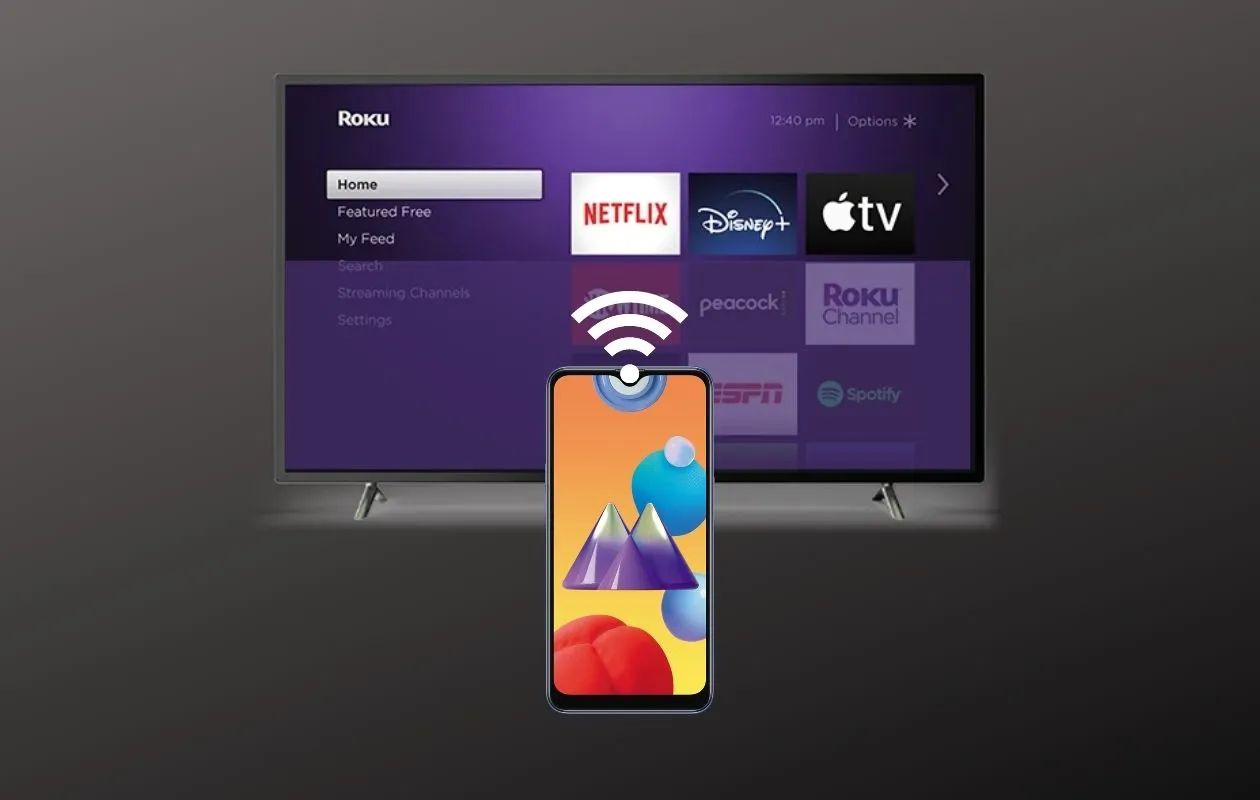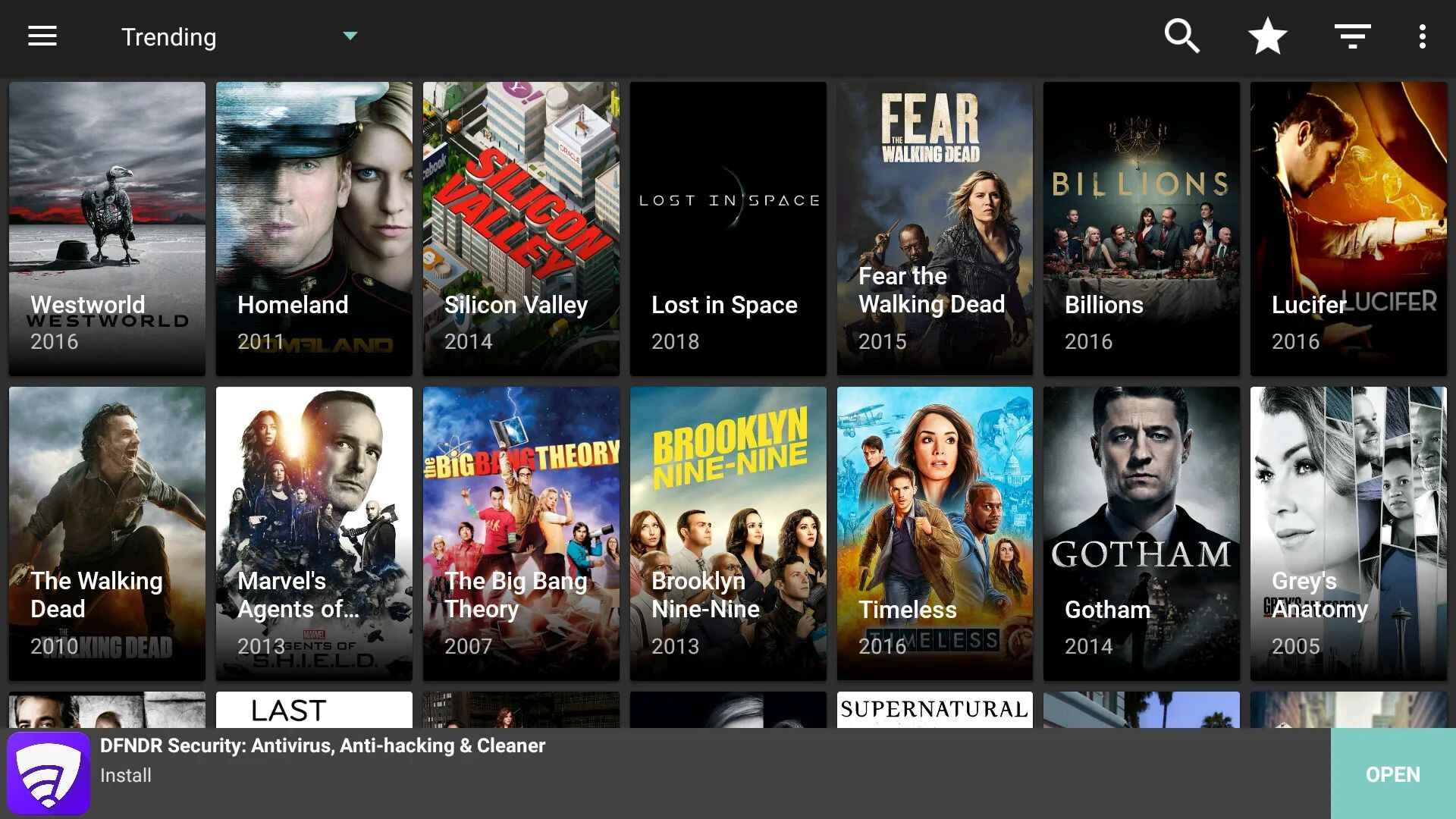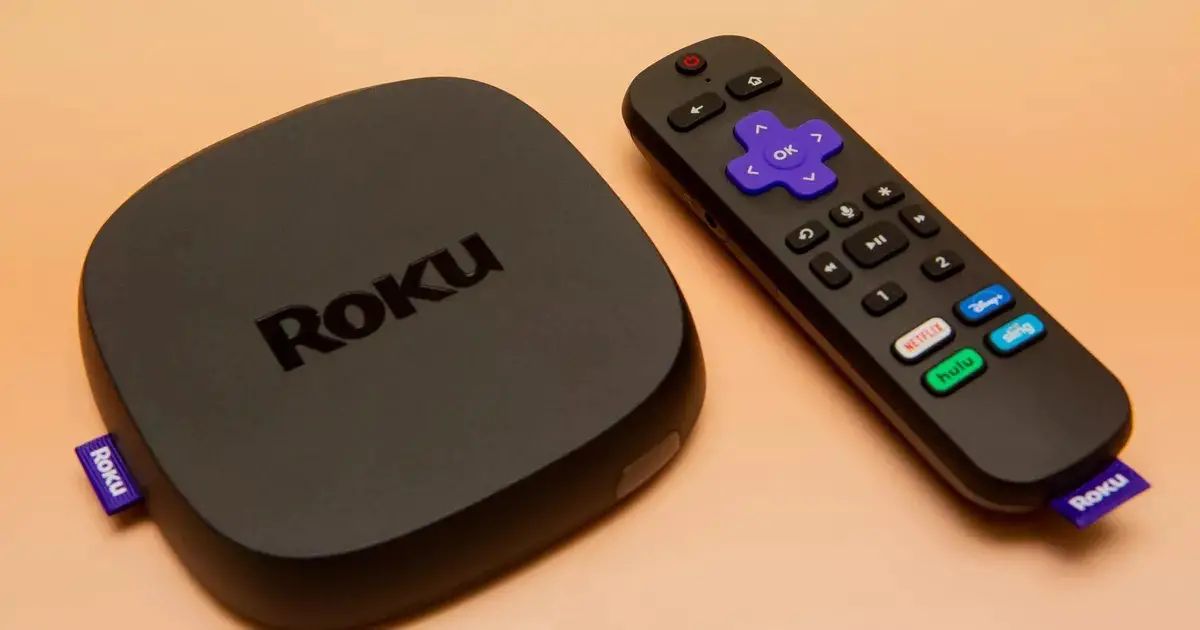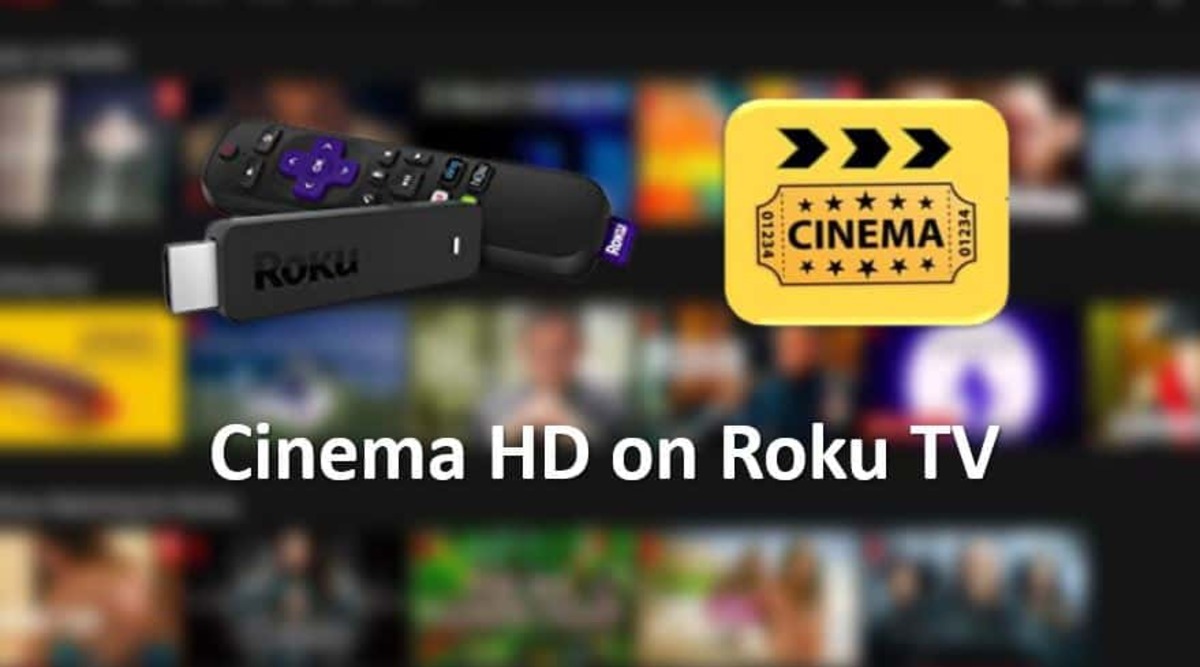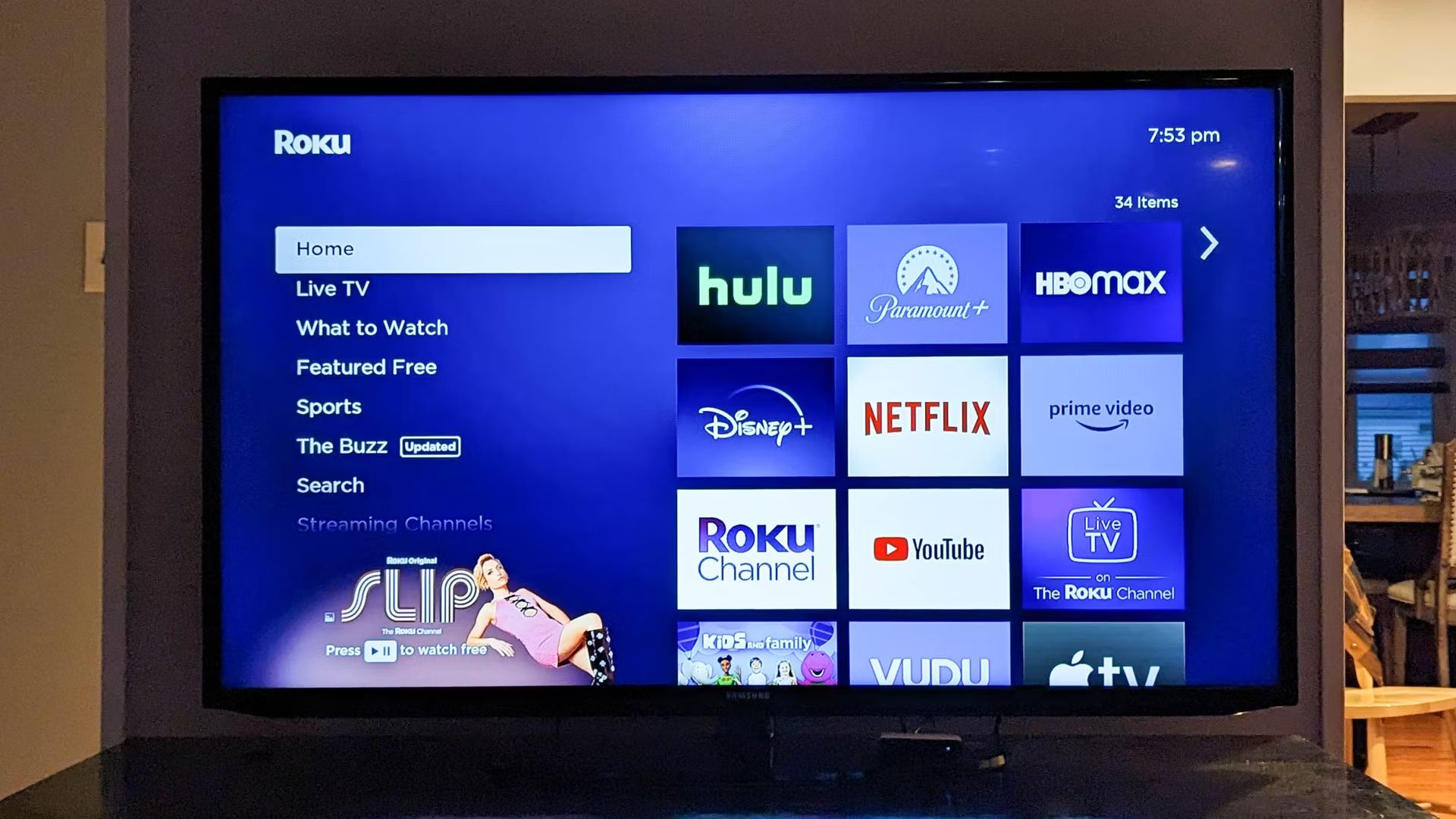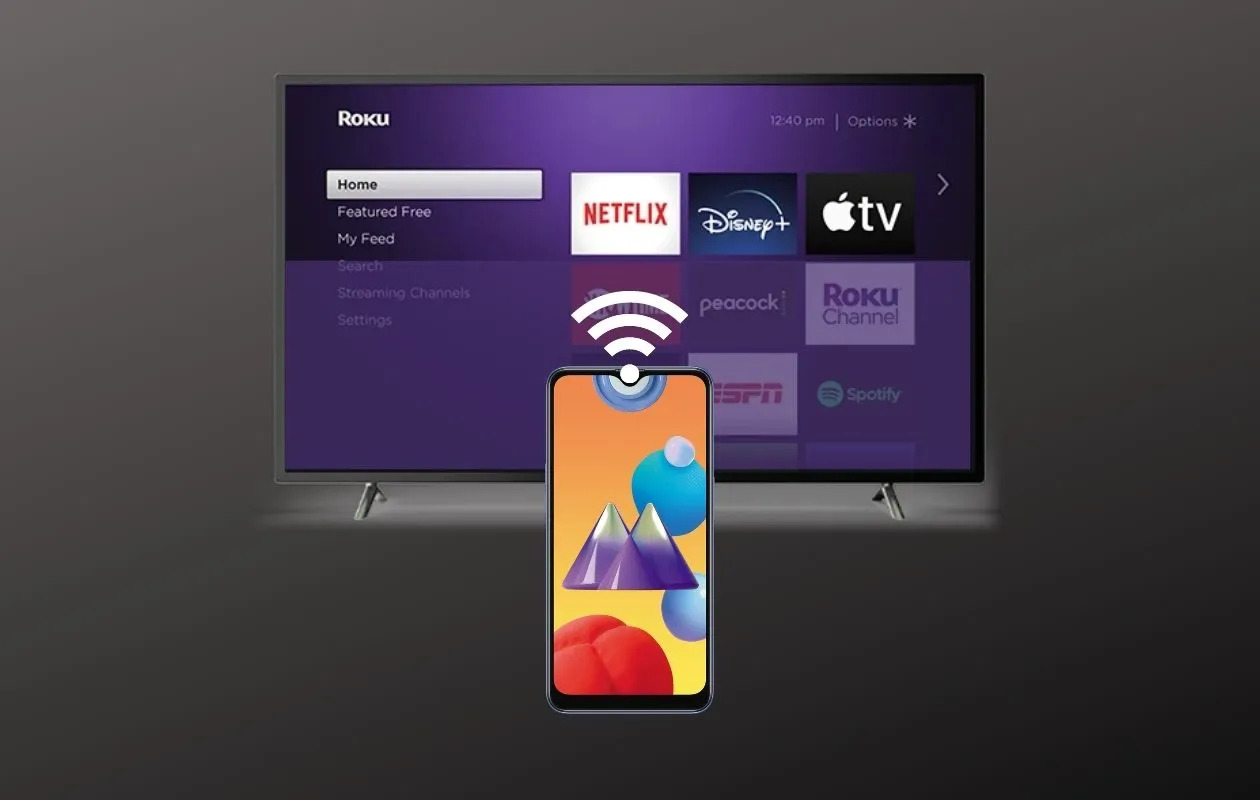Introduction
Mobile devices have become an integral part of our lives, and Android smartphones are no exception. With their powerful features and countless applications, Android devices can serve as excellent entertainment hubs. However, sometimes we may prefer to view our favorite content on a larger screen, such as a television. That’s where Roku, a popular streaming device, comes into play.
Roku offers a wide range of streaming options and can turn your TV into a smart TV, allowing you to access various streaming platforms. If you own both an Android device and a Roku streaming device, you have the option to mirror your Android screen onto your TV through the Roku device. This functionality opens up a whole new world of possibilities, enabling you to enjoy your Android smartphone or tablet content on a bigger display.
In this article, we will explore the different methods to mirror your Android device to Roku. We will also discuss why you might want to use this feature and provide troubleshooting tips for common issues that may arise during the mirroring process.
Whether you want to stream videos, view photos, play games, or even use productivity apps on a larger screen, mirroring your Android device to Roku can significantly enhance the experience. So, without further ado, let’s dive in and find out how to make it happen.
What does it mean to mirror Android to Roku?
Mirroring Android to Roku refers to the process of wirelessly displaying the screen of your Android device on your Roku-connected television. When you mirror your Android device to Roku, any content, including videos, photos, and apps, that is displayed on your Android screen will be replicated on your TV screen in real-time.
Essentially, mirroring enables you to project your Android device’s screen onto a larger display, allowing you to enjoy your favorite content or perform tasks on a more expansive interface. This feature is particularly useful when you want to share videos, photos, or presentations with a larger audience, or simply prefer the convenience of viewing content on a bigger screen.
It’s important to note that mirroring is different from casting or streaming. While casting or streaming involves sending media content from your Android device to Roku for playback, mirroring replicates your entire Android screen, including all active apps and activities.
When you mirror your Android device to Roku, you can navigate your device just as you would on the original screen. This means you can interact with apps, play games, and use your Android device’s features, all while the mirrored screen is displayed on your television. It provides a seamless and immersive viewing experience that brings your Android content to life on a larger scale.
It’s worth mentioning that not all Android devices support screen mirroring, and the availability of this feature may vary based on the device’s operating system version and manufacturer settings. However, most recent Android devices should have some form of screen mirroring functionality.
Now that we understand what it means to mirror Android to Roku, let’s explore the benefits and reasons why you might want to utilize this feature in the next section.
Why would you want to mirror your Android to Roku?
There are several reasons why you might want to mirror your Android device to your Roku-connected TV. Let’s explore some of the key benefits:
1. Larger Screen: Mirroring Android to Roku allows you to enjoy your favorite content on a bigger screen. Whether you’re streaming videos, playing games, or browsing through photos, the larger display provided by your TV enhances the overall viewing experience.
2. Sharing Content: Mirroring your Android device to Roku makes it easier to share content with others. Whether you want to show photos from your recent vacation or share a funny video with friends, mirroring allows everyone in the room to view the content together, making it a great option for presentations or gatherings.
3. Gaming: Many Android games are designed for a touch-based interface, but mirroring your Android device to Roku can provide a more immersive gaming experience. By using a gamepad or Roku remote, you can play games on a large screen without the limitations of a smaller touchscreen.
4. Multimedia Consumption: If you have media files saved on your Android device, mirroring to Roku lets you enjoy them on a larger and more comfortable screen. This can be especially useful for watching movies, TV shows, or videos stored on your device.
5. Productivity: Mirroring your Android device to Roku can also be valuable for productivity purposes. You can use productivity apps, such as document editors, presentation tools, and collaboration software, on a larger screen, enabling you to work more efficiently or conduct meetings more effectively.
6. Convenience: Mirroring Android to Roku provides a convenient way to use your Android device while enjoying a larger screen. You can browse the internet, check social media, respond to messages, and use other apps on your Android device, all while the mirrored screen is displayed on your TV.
7. Accessibility: For individuals with visual impairments or difficulties using smaller screens, mirroring Android to Roku offers an accessible solution. By displaying content on a larger screen, it can make it easier to read text, view images, and navigate through apps and menus.
Overall, mirroring your Android device to Roku offers numerous benefits, from enhancing your multimedia experience to improving productivity and accessibility. It’s a versatile feature that can cater to various needs and preferences, making it a valuable tool for Android device owners.
How to mirror Android to Roku using Screen Mirroring
Roku devices come equipped with a feature called “Screen Mirroring,” which allows you to mirror the screen of your Android device wirelessly. Here’s how you can mirror your Android to Roku using Screen Mirroring:
- Ensure that your Roku device and Android device are connected to the same Wi-Fi network.
- On your Roku device, go to “Settings” and then navigate to “System.”
- Select “Screen Mirroring” and choose either “Always Allow” or “Prompt” based on your preference.
- On your Android device, swipe down from the top of the screen to access the Quick Settings panel.
- Look for the “Screen Mirroring” or “Cast” icon (the icon may vary between devices and versions of Android).
- Tap the “Screen Mirroring” or “Cast” icon and select your Roku device from the list of available devices.
- Your Android device’s screen should now be mirrored on your Roku-connected TV.
During the Screen Mirroring process, keep in mind the following:
- Some Android devices may have a “Smart View” or “Miracast” option instead of “Screen Mirroring.” The steps vary slightly for those devices, but the principle remains the same – you’ll need to select your Roku device as the mirroring target.
- The performance of screen mirroring may vary depending on factors such as the quality of your Wi-Fi network, the processing power of your Android device, and any possible interference.
- Some content, such as DRM-protected videos or certain apps, may not be visible during screen mirroring due to copyright restrictions or compatibility issues.
Screen Mirroring is a built-in feature of Roku devices, making it a straightforward and convenient way to mirror your Android device without the need for any additional apps or equipment. Just follow the steps outlined above, and you can enjoy your Android device’s screen on your Roku-connected TV.
How to mirror Android to Roku using a third-party app
If your Android device does not support native screen mirroring or if you want more advanced features, you can use third-party apps to mirror your Android to Roku. These apps leverage the power of your Wi-Fi network to establish a connection between your Android device and Roku device. Here’s a general process on how to mirror Android to Roku using a third-party app:
- Install a screen mirroring app on your Android device. There are several popular options available, such as “AllConnect”, “Miracast Screen Mirroring”, or “AirScreen”. You can find these apps on the Google Play Store.
- Ensure that both your Android device and Roku device are connected to the same Wi-Fi network.
- Launch the screen mirroring app on your Android device.
- Follow the app’s on-screen instructions to scan for available devices or perform a search for your Roku device.
- Select your Roku device from the list of available devices in the app.
- Once the connection is established, your Android device’s screen will be mirrored on your Roku-connected TV.
Keep in mind that the specific steps and features may vary depending on the app you choose. However, most screen mirroring apps work similarly by establishing a connection between your Android device and Roku using Wi-Fi.
It’s worth noting that while third-party apps can offer additional features and flexibility, they may not always provide the same level of seamless performance as the native screen mirroring option. Factors such as network stability and device compatibility can affect the quality of the mirroring experience.
Additionally, some third-party mirroring apps may have limitations or require in-app purchases to access certain features. Before downloading and using any app, it’s recommended to read user reviews and check the app’s compatibility with your specific Android device and Roku model.
If you decide to use a third-party screen mirroring app, follow the app’s instructions for a smooth mirroring experience. Enjoy the convenience and expanded functionality that these apps offer in mirroring your Android device to your Roku-connected TV.
Other ways to connect Android to Roku
In addition to screen mirroring, there are a few other methods you can use to connect your Android device to Roku. Let’s explore these alternative options:
1. Roku Mobile App: Roku offers a dedicated mobile app for Android devices called the Roku Mobile App. This app allows you to control your Roku device directly from your Android device. You can use the app to browse and launch channels, control playback, search for content, and even use your phone’s keyboard for easier text input. While the Roku Mobile App doesn’t provide screen mirroring functionality, it offers a convenient way to interact with your Roku device and access its features.
2. Roku Media Player: Another way to connect your Android device to Roku is through the Roku Media Player. This feature allows you to play media files stored on your Android device directly on your Roku-connected TV. You can use this option to stream videos, music, or view photos from your Android device by selecting the media files from the Roku Media Player interface.
3. Casting Apps: Certain casting apps, such as AllCast or LocalCast, allow you to cast media content from your Android device to your Roku device. These apps work by converting the media files into a compatible format and streaming them to Roku for playback. Similar to screen mirroring, casting apps enable you to enjoy your favorite videos, music, and photos stored on your Android device on the larger screen provided by your TV.
4. Roku Channel Apps: Many popular streaming apps, such as Netflix, YouTube, and Hulu, have dedicated Roku channel apps available on the Roku Channel Store. By installing these apps on your Roku device and signing in with your account credentials, you can access your favorite streaming platforms through Roku and stream content directly on your TV. These channel apps provide a seamless streaming experience without the need for mirroring or casting from your Android device.
When exploring these alternative methods, ensure that your Android device and Roku are connected to the same Wi-Fi network for seamless communication. Depending on your preferences and the content you want to access, these methods offer different ways to connect your Android device to Roku and expand your entertainment options.
Troubleshooting common issues when mirroring Android to Roku
While mirroring your Android device to Roku is generally a straightforward process, you may encounter some common issues along the way. Here are a few troubleshooting tips to help you overcome these challenges:
1. Ensure Wi-Fi connectivity: Make sure that both your Android device and Roku device are connected to the same Wi-Fi network. Mirroring requires a stable and reliable network connection for seamless communication between the devices.
2. Restart your devices: If you’re experiencing connectivity issues, try restarting both your Android device and Roku device. This can often resolve temporary glitches and restore functionality.
3. Update firmware and apps: Ensure that both your Android device and Roku device have the latest firmware updates installed. Additionally, keep the apps on your Android device, including the screen mirroring app, updated to the latest versions for improved compatibility and performance.
4. Check device compatibility: Verify that your Android device and Roku device are both compatible with screen mirroring. Some older devices or lower-end Roku models may not support this feature. Refer to the device manuals or online documentation for specific compatibility information.
5. Check for app-specific limitations: Keep in mind that certain apps, especially those with DRM-protected content or specific usage restrictions, may limit or block screen mirroring. If you’re having difficulty mirroring content from a particular app, try a different app or method to achieve the desired functionality.
6. Adjust network settings: If you experience lag or buffering during mirroring, try optimizing your Wi-Fi network settings. Consider moving your router closer to your devices, reducing interference from other devices, or upgrading to a higher-bandwidth network if necessary.
7. Restart the screen mirroring process: If the mirroring connection drops or becomes unstable, you can try disconnecting and reconnecting the screen mirroring feature. This can sometimes resolve temporary issues that may arise during the mirroring process.
8. Use an alternate mirroring method or app: If you’re still encountering issues or limitations with native screen mirroring or a specific app, consider trying an alternate screen mirroring method or exploring different third-party mirroring apps. Some apps may offer additional features or improved performance that can overcome certain limitations or troubleshooting challenges.
If you continue to experience difficulties with screen mirroring, consult the user manuals or online support resources for both your Android device and Roku device. These resources may provide specific troubleshooting steps or additional guidance to address any issues you may encounter.
By following these troubleshooting tips, you can overcome common obstacles and ensure a smooth mirroring experience when connecting your Android device to Roku.
Conclusion
Mirroring your Android device to Roku offers a convenient way to enjoy your favorite content on a larger screen. Whether you prefer to stream videos, play games, browse photos, or even use productivity apps, mirroring allows you to transfer the interface of your Android device onto your TV through your Roku device.
In this article, we explored the concept of mirroring Android to Roku and discussed the various methods to achieve this. We covered the steps to mirror Android to Roku using the built-in Screen Mirroring feature, as well as using third-party apps for more advanced functionality. We also mentioned alternative methods like the Roku Mobile App, Roku Media Player, and casting apps.
Furthermore, we discussed the benefits of mirroring Android to Roku, including the ability to enjoy a larger screen, share content with others, enhance gaming experiences, increase productivity, and improve accessibility for visually impaired users.
It’s important to understand that the mirroring experience may vary depending on the quality of your Wi-Fi network, device compatibility, and any potential limitations with specific apps or content. By troubleshooting common issues and following the recommended steps, you can overcome challenges and ensure a smooth mirroring process.
Whether you choose to use the native screen mirroring feature, explore third-party apps, or utilize other connection methods, mirroring your Android device to Roku opens up a new realm of entertainment possibilities. So, go ahead and enjoy your Android content on the big screen with the convenience and flexibility of the Roku streaming device.







